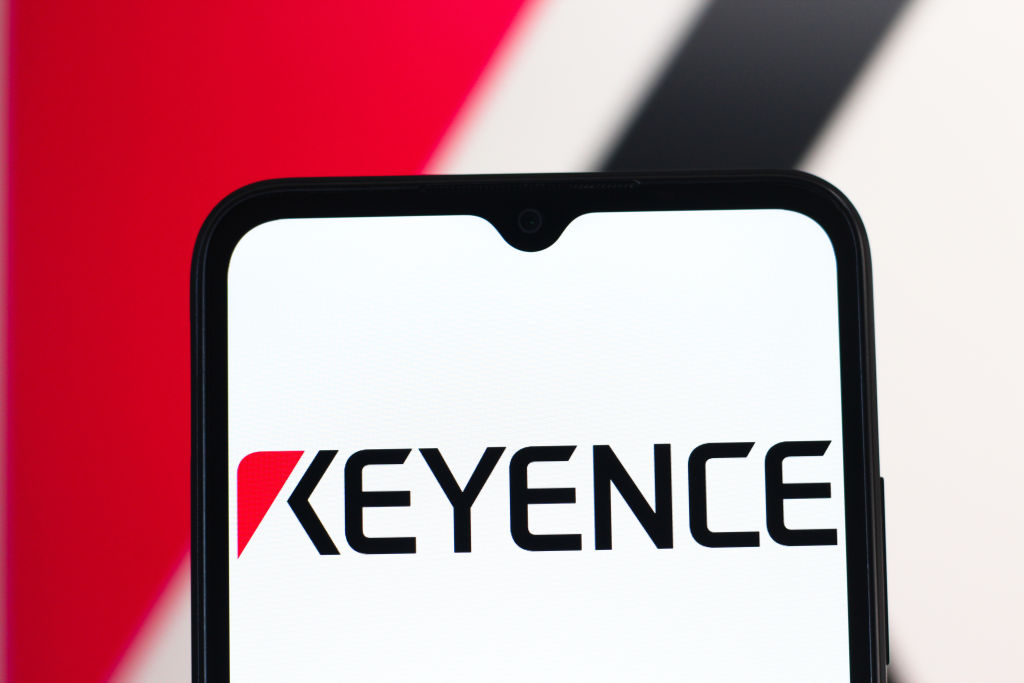Time to tap into Africa’s mobile money boom
Favourable demographics have put Africa on the path to growth when it comes to mobile money and digital banking


The UK economy needs more workers. Even though net migration hit a record of 745,000 in 2022 and the number of people in employment has risen close to an all-time high, there are still nearly a million open roles. Economists and policymakers have spent countless hours trying to determine the root cause of this problem, and two main issues have been identified, both of which revolve around economic inactivity. The number of people entering retirement or leaving the workforce owing to long-term health difficulties has increased dramatically. The trend does not appear to be slowing.
The Office for Budget Responsibility’s forecasts show that economic inactivity owing to ill health and old age could weigh heavily on economic growth over the next three decades. That is to say nothing of the impact an ageing and sickly population will have on government finances, with a shrinking number of employees funding an ever-growing number of those on state support.
This problem is not unique to the UK. All G7 economies are dealing with ageing populations, mounting economic inactivity and a declining birth rate. Nowhere is the trend starker than in China. China’s economic miracle and explosive growth over the past three decades have been powered by its large, young population. Exports underpinned economic expansion over much of the past few decades, but as discretionary incomes have grown, domestic consumption has taken over.
MoneyWeek
Subscribe to MoneyWeek today and get your first six magazine issues absolutely FREE

Sign up to Money Morning
Don't miss the latest investment and personal finances news, market analysis, plus money-saving tips with our free twice-daily newsletter
Don't miss the latest investment and personal finances news, market analysis, plus money-saving tips with our free twice-daily newsletter
Household spending now accounts for more than 50% of GDP and is expected to keep growing as the country continues to develop. However, China is ageing rapidly. Its population has declined for two years in a row, with the population falling by 2.1 million in 2023, following a decline of 850,000 in 2022, the first fall since the great famine in 1961. Deaths are exceeding births and the population of residents over 60 reached nearly 300 million in 2023, up by 20 million in a year.
While China still has a relatively young population, with an average age of 37 compared to the UK’s 40, the average age is set to rise rapidly over the next two decades. This is a problem because consumers have a lower propensity to spend as they age, especially if they don’t have a social safety net. According to the United Nations’ International Labour Organisation, the average monthly pension payment in China in 2020 was around ¥2,040 yuan (£222). In 2021, the last full year for which Beijing’s National Bureau of Statistics offers data, the average Chinese worker earned ¥105,000 (£11,410) a year. So an ageing population is a red flag for China’s domestic consumption and overall economic growth.
A demographic opportunity for Africa
Ageing is a problem worldwide. Japan is the oldest country in the world, with a third of its population over 65, and this has been cited as one of the reasons why the country’s economy has struggled for so long. The ageing population hasn’t been spending, holding down inflation and domestic consumption.
At the other end of the spectrum, Africa is expected to see an explosion in its working-age population over the next three decades. The world’s working-age population will increase by two billion people during this period, and almost 80% of those workers will come from Africa.
Countries such as Uganda, which has an average age of 16 and a population growth rate of 3%, one of the highest in the world, are just at the start of what could be a multi-decade period of economic growth driven by domestic consumption, similar to China’s economic miracle, which started with a young, highly motivated population.
Africa is set to dominate the charts of the world’s fastest-growing economies over the next couple of years. According to the latest Macroeconomic Performance and Outlook from the African Development Bank, GDP growth across the continent is expected to average 3.8% in 2024 and 4.2% in 2025, compared with the global average figure of 2.9% and 3.8% respectively.
The problem investors face is gaining exposure to this growth. Many African countries have domestic stock exchanges, but it is complicated for the average investor to buy a position in these markets. Brokers don’t tend to offer access, and the markets are frequently highly illiquid.
Even if you can find a broker and buy shares, you will be exposed to significant currency fluctuations and capital controls. South Africa has the continent’s most developed financial system. But it is also one of the continent’s worst-performing economies, only just escaping a recession at the end of last year.
This, in itself, presents an opportunity. Financial infrastructure across Africa offers tremendous scope for growth and expansion across all subsectors. A report published in 2020 by consultancy McKinsey & Company discovered that cash is still used in 90% of transactions across Africa.
Even though the financial technology (fintech) sector has grown rapidly, excluding South Africa penetration is only around 5% of the market. Kenya has the highest penetration rate at 13% of the population. McKinsey estimates that if penetration across the continent reaches the same level, fintech revenues could grow by a factor of eight over the next few years.
Africa's demand for mobile money

Digital connectivity is just what Africa’s young mobile population needed
To understand how Africa’s financial world is developing, we must move away from what we know about banking and finance. Many of the countries across the continent have never had the infrastructure we associate with banks and financial institutions in the UK.
There are exceptions, such as South Africa, which has the infrastructure to allow large banking groups to develop. For most of the continent, smaller cooperatives have dominated. But this is changing rapidly with the spread of digital banking. Consumers can now do all of their banking and financial transactions from the palm of their hand with a smartphone.
It is far easier to build a mobile network and send mobile waves or satellite signals over thousands of miles than to try to build a bank several hundred miles from the closest city with no running water, regular electricity or tarmac roads.
But digital connectivity is just what the country’s young mobile population wants. McKinsey found that across Africa, 70% of all transactions are made via mobile, with just 20% of consumers saying they prefer face-to-face contact. Banks’ customers don’t need face-to-face contact in Africa because they’ve never had it. For the most part, the continent has gone straight to mobile payments, skipping the part in the middle.
Over the next couple of years, this combination of more spending and increased market penetration could provide a double tailwind for fintech and payment providers that can capitalise on the opportunity.
One of the oldest players in the market is the company now known as M-Pesa. This business started life in Kenya in 2002 when mobile providers realised consumers were using minutes and airtime as a form of currency, sending pre-purchased minutes and data to relatives, who could sell them on or keep them as a sort of informal bank account.
The fact that consumers were doing this proved there was a demand for mobile money products that were both easier to use and safer than traditional banking. Users bought minutes and data at one of thousands of so-called airtime distributors. These were, and remain, small shops run by the self-employed. Safaricom, the biggest phone company in Kenya and part of Vodafone, worked to develop the concept into a full-blown mobile-money offering, which expanded to offer microloans. Today, M-Pesa is still owned by Vodafone and Safaricom (publicly traded in Kenya) and has over 51 million customers sending $314billion a year.
The most significant player is South Africa’s MTN Group (listed in South Africa). This is another mobile network provider that has developed a payment network using its subscriber base of 290 million; it currently has 60 million active monthly MoMo (Mobile Money) wallets. Earlier this year, the group took a major step to help develop its network by partnering with Mastercard, the world’s second-largest payment network, to increase the number of locations where its mobile money is accepted, while also working to enhance security.
The agreement will open up 100 million locations worldwide, enhancing the international offering and giving MTN access to the growing and increasingly lucrative international remittance market. According to Mastercard, international remittance transfers to the continent comprise 40% of sub-Saharan Africa’s GDP. The partnership with MTN is part of Mastercard’s plan to bring one billion people and 50 million small and medium-sized businesses into the digital economy by 2025.
Airtel Africa is nipping at the heels of these more prominent players. The company had 140 million customers by March 2023, 31.5 million of whom were Airtel Money customers. The group operates in 14 countries, Nigeria being its largest market. In 2023, it booked $2.1bn of revenue from mobile services in this market, a rise of 20.3%. Its mobile-money business was the fastest-growing of all divisions. Revenue grew from $553m in 2022 to $692m in 2023. Recent trading updates show this trend has continued.
These are some of the direct players in the market. Indirectly, companies such as Wise, PayPal, Visa and Mastercard are all competing for a share of this rapidly growing market. All have their own unique qualities.
This article was first published in MoneyWeek's magazine. Enjoy exclusive early access to news, opinion and analysis from our team of financial experts with a MoneyWeek subscription.
Get the latest financial news, insights and expert analysis from our award-winning MoneyWeek team, to help you understand what really matters when it comes to your finances.

Rupert is the former deputy digital editor of MoneyWeek. He's an active investor and has always been fascinated by the world of business and investing. His style has been heavily influenced by US investors Warren Buffett and Philip Carret. He is always looking for high-quality growth opportunities trading at a reasonable price, preferring cash generative businesses with strong balance sheets over blue-sky growth stocks.
Rupert has written for many UK and international publications including the Motley Fool, Gurufocus and ValueWalk, aimed at a range of readers; from the first timers to experienced high-net-worth individuals. Rupert has also founded and managed several businesses, including the New York-based hedge fund newsletter, Hidden Value Stocks. He has written over 20 ebooks and appeared as an expert commentator on the BBC World Service.
-
 Three Indian stocks to buy for long-term profit growth
Three Indian stocks to buy for long-term profit growthOpinion Rita Tahilramani and James Thom, co-managers at the Aberdeen New India Investment Trust, highlight three Indian stocks to buy now
-
 Hiring new staff for your business? Help is available
Hiring new staff for your business? Help is availableHiring more employees is a costly business, but help is available from the government, says David Prosser
-
 Polar Capital: a cheap, leveraged play on technology
Polar Capital: a cheap, leveraged play on technologyPolar Capital has carved out a niche in fund management and is reaping the benefits
-
 Vaccines inject billions into Big Pharma – how to profit from the sector
Vaccines inject billions into Big Pharma – how to profit from the sectorThe vaccines subsector received a big fillip from Covid, but its potential extends far beyond combating pandemics. Here's what it means for investors
-
 'Investors should keep putting their trust in investment trusts'
'Investors should keep putting their trust in investment trusts'Interview Peter Walls, manager of the Unicorn Mastertrust fund, analyses investment trusts in a conversation with Andrew Van Sickle
-
 Monks Investment Trust is worthy of the spotlight
Monks Investment Trust is worthy of the spotlightMonks Investment Trust, a global growth trust, sits in the shadow of its stablemate, Scottish Mortgage. But its record warrants attention, says Max King
-
 New year, same market forecasts
New year, same market forecastsForecasts from banks and brokers are as bullish as ever this year, but there is less conviction about the US, says Cris Sholto Heaton
-
 'Expect more policy U-turns from Keir Starmer'
'Expect more policy U-turns from Keir Starmer'Opinion Keir Starmer’s government quickly changes its mind as soon as it runs into any opposition. It isn't hard to work out where the next U-turns will come from
-
 Why does Donald Trump want Venezuela's oil?
Why does Donald Trump want Venezuela's oil?The US has seized control of Venezuelan oil. Why and to what end?
-
 Britain heads for disaster – what can be done to fix our economy?
Britain heads for disaster – what can be done to fix our economy?Opinion The answers to Britain's woes are simple, but no one’s listening, says Max King